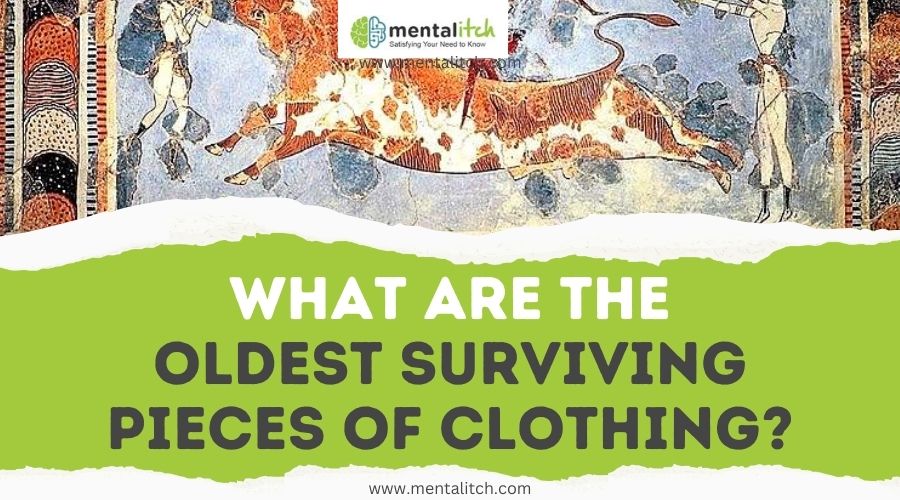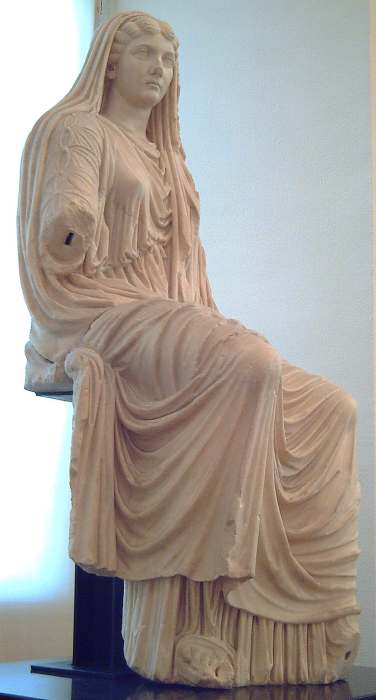Clothing occupies a fundamental thread, intertwining necessity, expression, and innovation. From the earliest societies to modern civilizations, the evolution of apparel reflects the environmental adaptations, cultural identities, and technological advancements of humanity.
Human history is rich with innovations and advancements, with clothing being a fundamental aspect of our cultural and practical evolution. From the earliest days, garments have played a crucial role in protecting us from the elements, expressing social status, and showcasing craftsmanship. This post shines a light on the incredible journey of clothing through time, focusing on some of the oldest surviving pieces that offer us a glimpse into the past.
The significance of these ancient garments extends far beyond their material value. They serve as a bridge to our ancestors, providing insights into the materials, techniques, and aesthetics valued by early societies. As we examine these remarkable pieces, we gain a deeper understanding of the complexities and ingenuity of human history, reflected through the fabric of time.
Tarkhan Dress (c. 3200 BC)
The Tarkhan Dress, dating back to around 3200 BC, is the world’s oldest known woven garment. Found in a tomb in Tarkhan, Egypt, this linen dress showcases the advanced weaving and sewing skills of ancient Egyptians. Its design suggests it was made for a high-status individual, tailored to fit closely to the body. The dress’s preservation over millennia allows us to glimpse into the sophisticated textile craftsmanship of early civilizations.
Now housed in the Petrie Museum of Egyptian Archaeology in London, the Tarkhan Dress continues to fascinate historians and fashion experts alike. Its discovery reveals much about ancient Egyptian society, including their social hierarchies, clothing practices, and the importance of linen in their culture. This dress not only represents a piece of ancient fashion but also serves as a testament to the ingenuity and skill of the people who created it.
Ötzi’s Clothing (c. 3370-3100 BC)
Ötzi the Iceman, discovered in the Italian Alps in 1991, provides a remarkable snapshot of Copper Age clothing. His attire, dating from around 3370-3100 BC, showcases an array of garments and accessories crafted from various animal skins and fibers. Ötzi wore a cloak made of grass, a hat of bear fur, shoes filled with grass for insulation, a coat, leggings, a loincloth, and a belt. These pieces highlight the resourcefulness and adaptability of ancient people to their environment, utilizing available materials to create functional and durable clothing.
The preservation of Ötzi’s clothing offers invaluable insights into the clothing techniques, social practices, and daily life of people living over 5,000 years ago. Now displayed at the South Tyrol Museum of Archaeology in Italy, Ötzi and his garments draw interest from scientists, historians, and the public. They serve as a direct link to our ancestors, illustrating the evolution of clothing technology and the interconnectedness of human innovation with the natural world.
The Mummies of Ürümchi (c. 1800 BC – AD 200)
The Mummies of Ürümchi, unearthed in the Tarim Basin of Western China, offer a unique window into ancient textile and clothing practices. Dating from around 1800 BC to AD 200, these well-preserved mummies were discovered with a variety of garments, showcasing a surprising blend of local and distant cultural influences. Among the textiles found were woolen fabrics, leather boots, and felt hats, illustrating a sophisticated understanding of textile production and the use of diverse materials to create clothing suited for the harsh desert environment.
The garments associated with these mummies, including intricately woven patterns and vibrant dyes, suggest a complex society with established trade connections, possibly linking them to the distant cultures of Europe and Central Asia. The preservation of these textiles in the arid climate of the Tarim Basin has provided archaeologists and historians with invaluable insights into the migration, trade, and cultural practices of ancient Eurasian peoples. These findings are displayed in various museums in Xinjiang, China, offering a fascinating glimpse into the lives of people who lived thousands of years ago.
The Hallstatt Textiles (c. 800-400 BC)
The Hallstatt Textiles represent a significant archaeological discovery, shedding light on early European textile production and clothing styles. Dating back to between 800 and 400 BC, these ancient fabrics were uncovered in the Hallstatt salt mines of Austria, an area known for its rich historical and cultural heritage. The preservation of these textiles in the salt mines has been remarkable, offering a rare and invaluable glimpse into the Iron Age.
These textiles are among the earliest evidence of complex weaving and dyeing techniques in Europe, demonstrating the Hallstatt society’s advanced skills in textile manufacture. The variety of fabrics found, including woolen garments and possibly remnants of plant-based clothing, illustrates the diversity of materials used and the sophistication of ancient European dress. The textiles not only reveal the technological capabilities of the Hallstatt people but also offer insights into their social structures, economies, and daily lives.
The Dungiven Costume (c. 16th century AD)
The Dungiven Costume is a remarkable find from the 16th century, discovered in a bog near Dungiven, Ireland. It’s a rare glimpse into the clothing of the Irish elite during this period, comprising a woolen cloak, jacket, trousers, and a leather belt. The preservation of the costume in the bog has allowed us to see the intricate details of the fabric and construction, highlighting the craftsmanship of the time. This ensemble reflects the fashion and social status of its owner, showcasing the style of Irish nobility.
Now housed in the Ulster Museum in Belfast, the Dungiven Costume continues to fascinate both historians and the public. Its survival over centuries offers a unique insight into the textiles and clothing practices of early modern Ireland. Through this costume, we learn about the materials, techniques, and designs valued by the Irish aristocracy, providing a window into the cultural heritage of Ireland in the 16th century.
The Greenland Gown (c. 14th century AD)
The Greenland Gown, discovered in a Norse settlement, dates back to the 14th century AD and offers a rare glimpse into the clothing practices of medieval Greenland. This woolen garment, designed to withstand the cold Arctic climate, highlights the Norse settlers’ skill in textile production and their adaptation to harsh environments. The gown is a testament to the extensive reach of Norse voyages and settlements, extending even to the frigid landscapes of Greenland.
Now housed in the National Museum of Denmark in Copenhagen, the Greenland Gown is an important piece of medieval clothing that provides insight into the daily lives and survival strategies of the Norse people in Greenland. Its preservation over centuries allows historians and archaeologists to study the material culture of the Norse and their interactions with the environment. The gown not only reflects the practical needs of its wearer but also the broader story of Norse exploration, settlement, and adaptation in the medieval period.
Lusehøj Cloth (c. 4th century AD)
The Lusehøj Cloth, dating back to the 4th century AD, is a fascinating artifact unearthed from a Viking grave in Lusehøj, Denmark. This exquisite piece of fabric is a testament to the sophisticated textile skills of the Vikings, known for their prowess in navigation and exploration. The cloth’s fine wool and intricate design suggest it was a high-status item, possibly used for ceremonial purposes or as a symbol of wealth and power within Viking society. Its preservation offers rare insight into the textile technologies and aesthetic preferences of the Viking Age, highlighting the importance of clothing and fabric in ancient Nordic culture.
Now housed in the National Museum of Denmark, the Lusehøj Cloth continues to captivate historians and enthusiasts alike. Its discovery sheds light on the trade networks, cultural exchanges, and daily life of the Vikings. The cloth’s durability and craftsmanship speak volumes about the advanced techniques employed by Viking weavers, contributing significantly to our understanding of early medieval European textile production.
Coptic Tunics (c. 3rd-7th century AD)
The Coptic Tunics, dating from the 3rd to the 7th century AD, are exquisite examples of early Christian clothing found in Egypt. These garments are renowned for their detailed textile work, including intricate woven patterns and religious symbols that reflect the beliefs and artistic expression of the Coptic Christian community during this period. Made from linen and sometimes wool, these tunics feature vibrant colors and designs, showcasing a high level of craftsmanship and the cultural blending of Egyptian and Christian traditions.
The preservation of these tunics offers valuable insights into the social and religious lives of the Copts, as well as the textile technologies and fashion sensibilities of early Christian societies in Egypt. They are found in various museums around the world, serving as important artifacts for understanding the material culture and artistic achievements of ancient Christian communities.
Final Thoughts
These surviving pieces of clothing are not just artifacts; they are narratives woven from the threads of human history, telling stories of survival, craftsmanship, and cultural exchange across millennia. They remind us of the interconnectedness of human societies and the legacy of our collective ingenuity. As we continue to uncover and study these treasures, we deepen our understanding of our shared past, enriching our appreciation for the complexity and diversity of human culture through the ages.


